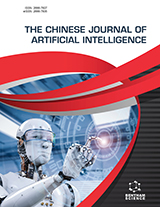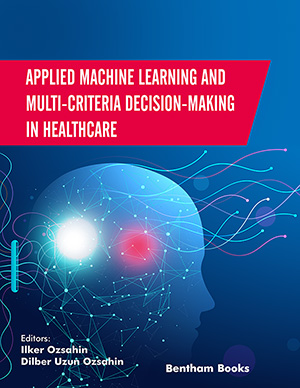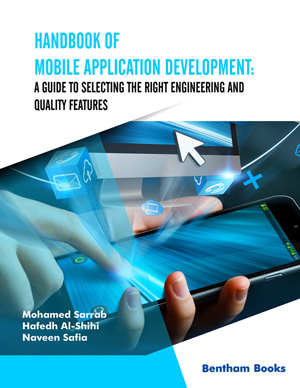Preface
Page: iii-iv (2)
Author: Shunji Wakamiya, Kazunobu Yamauchi and Hiroyuki Yoshihara
DOI: 10.2174/978160805216511201010iii
List of Contributors
Page: v-vii (3)
Author: Shunji Wakamiya, Kazunobu Yamauchi and Hiroyuki Yoshihara
DOI: 10.2174/97816080521651120101000v
Definition and Classification of End User Computing in This Book
Page: 3-5 (3)
Author: Shunji Wakamiya, Kazunobu Yamauchi, Hiroyuki Yoshihara, Tsukasa Tsunoda and Osamu Sato
DOI: 10.2174/978160805216511201010003
PDF Price: $15
Abstract
In this book, we define “organizational computing” as computing where vendors assume responsibility for the development of systems or software, and “end user computing” as computing where the responsibility is assumed by the end users themselves. Moreover, we define “institutional computing (I-type)” and “staff computing (S-type)” as computing environments where systems or software is developed by staff within and outside the division of information and systems, respectively. We classify end user applications into three categories: systems in which electronic information moves interactively between hospital information systems and end user applications, systems in which electronic information moves in one direction only from the former systems to the latter applications, and systems that have no cooperation between the two.
Construction of a Clinical Decision Support System
Page: 6-24 (19)
Author: Yasuhito Yamamoto
DOI: 10.2174/978160805216511201010006
PDF Price: $15
Abstract
Computerized decision support system (CDSS) has demonstrated its efficacy in improving clinical practices and patient outcomes. HiPER 2.0 (Hiroo Information System for Pediatrics and ER, version 2.0), which the current authors have developed, is a system with an arrangement and techniques of processing and disseminating information different from those mentioned earlier in CDSS. HiPER 2.0 can collect a large amount of complex medical information. For example, order entry information at the time of empirical treatment was prescribed and its dosage was provided to the ICT and intervened to improve the effectiveness of nosocomial infection control. The system was not designed merely to perform intelligent processing with machines, rather, the CDSS was designed to encourage team care and facilitate rather than diminish opportunities for medical personnel to consult with specialists. New interfaces with enhanced “awareness” may alter views on CDSS and allow humans to better coexist with them.
Bi-Directional Integration Between EMR and FileMaker
Page: 25-38 (14)
Author: Shigeru Yoshida
DOI: 10.2174/978160805216511201010025
PDF Price: $15
Abstract
We developed end-user computing solutions with FileMaker. In addition, we successfully built a bidirectional integration scheme between our electronic medical records (EMR) system and the FileMaker solutions. The key to success is that we built a simple integration scheme and divided responsibility in case of problems between the EMR system and the FileMaker solutions.
Document-Oriented Computing-Based System
Page: 39-49 (11)
Author: Akira Ohtahara
DOI: 10.2174/978160805216511201010039
PDF Price: $15
Abstract
This was a record for introduction of a fusion (document-oriented, computing-based) system which supports EMR (EMR) system by using FileMaker Pro Ver. 9 server, for changing a paper-based system in our hospital. For this purpose an End User Computing (EUC) strategy was taken to train and encourage the front-end users involved in the development of applications. Many documents which were made by the FileMaker Pro system were kept in PDF format on the EMR server. One advantage of this system was the similarity about end user’s tasks for filling up these documents with the past paper-based system. End users suffered less from disorientation and misunderstanding. Another advantage was that easy negotiation between each section was re-examined in regard to site needs or job alternation as with the PDCA cycle approach. However, differences in the levels of various applications and variations in operating environments seem to have given rise to a number of problems. In addition, there have also been issues with application maintenance when the person in charge resigns.
Hospital Information System at Osaka National Hospital: Input/Output and Reference System Using FileMaker
Page: 50-70 (21)
Author: Atsuhiko Okagaki
DOI: 10.2174/978160805216511201010050
PDF Price: $15
Abstract
Electronic Medical Record System (EMR) has some weakness in their usability. The weakness is due to adopting “Waterfall” method to every part of the system. To get rid of those problems, our hospital uses FileMaker Pro to input/output Electronic Medical Record. In our system, all clinical data of a patient will be spread out on FileMaker when one would like to open a record. Then, added information when saving the record will be transferred to basic system. The input-output layouts can be modified easily as user need, and several functions can be introduced very easily. Our system is so flexible that we can easily customize all the layouts as requested by any department of a large-scale general hospital and those of clinical supporting system. In addition to the flexibility of the interface layer, another benefit of our system is that FileMaker layer can be used as the viewer of multi-vender system.
Integration Between Hospital Information Systems and FileMaker Pro
Page: 71-78 (8)
Author: Tetsu Nakamura
DOI: 10.2174/978160805216511201010071
PDF Price: $15
Abstract
Although, computerization has been widely adopted in medical communities, it is often difficult for small-scale hospitals to make the large investments necessary to introduce electronic medical record systems, such as hospital information, radiology information, and picture archiving and communication systems (HIS, RIS, PACS, respectively). We have constructed medical information support systems with the commercial database software FileMaker Pro, which was also integrated with other hospital systems, such as PACS, ordering, and general account systems. Our FileMaker databases consist of master databases containing data regarding patient attributes, drug information, disease information, etc., and operation databases consisting of administration, medical histories, examination schedules, imaging reports, operation plans, etc. FileMaker databases collect patient attributes from the general account system every 3 min. We developed an interface server for programs integration. The servers were connected with ODBC. After working with this cooperation program, we could reexamine operation of duties. Medical information support systems using FileMaker Pro are ideal for hospitals, because they can cooperate with other hospital systems or work as standalone systems. In a wide sense, this system can be defined as an electronic medical record, and it would be suitable for use in small-scale hospitals because of its low cost and ease of customization.
Gradual Implementation of Local Medical Information System Within Hospital Using FileMaker Pro®: New Insights on Physician and Clinical Stuff Adaptation
Page: 79-88 (10)
Author: Kazutoshi Matsunami
DOI: 10.2174/978160805216511201010079
PDF Price: $15
Abstract
The Matsunami General Hospital (434 beds, aiming acute management of diseases and injuries) looks ahead to the next century with excitement and enthusiasm, eager to build upon its past strengths and to continue to develop new ways for serving its patients and the improvement of public health, in particular Gifu area. This chapter introduces the application of FileMaker Pro® in intra-hospital clinical supporting system (CSS) to give new insights on physician, medical stuffs and patients. The FileMaker Pro-associated local networks cost are reasonable and they are easy to be incorporated into non-governed hospital.
A Medical Information Management System by Medics, For Medics, Built With Filemaker and Incorporated into the Hospital Information System
Page: 89-106 (18)
Author: Shinsuke Hiramatsu
DOI: 10.2174/978160805216511201010089
PDF Price: $15
Abstract
Electronic medical records or hospital information system (HIS) is designed to collect individual patients’ information in the clinic. Otherwise conducting medical research, requires the collection of information, and the current HIS is not considered for this. Also, there is no such mechanism to be easily summarized the patient's history in the list form.
In Nippon Steel Hirohata hospital, we build and run the subsystem powered by Filemaker, the commercial database software, by the method of end user computing for 18 years.
In the subsystem, we create the ledger of hospitalization, surgical register, and list of malignant tumor patients, and any medical information. Also this supports to make the hospital certificates and other documentation. In addition, we are making the integrated clinical history system on those systems. This information is referred by all devices on the network in our hospital, which helps with the effective use of information shared by each department.
Small System Suitable For Team Working With Diabetes Mellitus Patients
Page: 107-121 (15)
Author: Tatsuhiko Koga and Hiroshi Hara
DOI: 10.2174/978160805216511201010107
PDF Price: $15
Abstract
Over the last 20 years, we have developed a small database system using FileMaker Pro to follow patients with diabetes mellitus. We developed this system because there were no electric database systems available at Yamaguchi Red Cross Hospital in 1989. Most hospitals now have Electronic Health Record (EHR) systems. However, these systems were developed for common clinical usage, and do not track sufficient specialised information to allow us to follow a particular disease. Therefore, small systems in addition to EHR are still required. Medical staff usually do not have sufficient computer skills to develop and maintain such systems, but generally have adequate skills to use these systems as well as the desire to maintain the health of their patients. It is important for medical staff to learn to make databases themselves to be able to obtain sufficient information regarding their patients while maintaining sufficient levels of privacy.
Improvement of Workflows in Health Screening For Employees by Making Use of Existing Systems and FileMaker Pro
Page: 122-135 (14)
Author: Shunji Wakamiya and Kazunobu Yamauchi
DOI: 10.2174/978160805216511201010122
PDF Price: $15
Abstract
Here, we report a new approach to the systematization of health screening for employees at a hospital that involves developing a new system requiring little capital investment. A new system was developed with FileMaker Pro using existing order entry and radiological health screening systems. The effectiveness of this new system was examined by comparing the implementation efficiency of health screening for employees before and after its introduction, and by comparison with another such system currently in place at other medical institutions with regard to efficiency. Although the new system has been in place for more than three years, no problems have yet been encountered. This new system is very useful in this hospital and may also be useful for institutions where it is difficult to introduce expensive new systems for systematic health screening because of problems regarding capital management.
Merits and Demerits in End User Computing Based Online Incident Reporting Application Made With FileMaker Pro in Comparison With Organized Computing Based Counterpart
Page: 136-146 (11)
Author: Shunsuke Hotokezaka
DOI: 10.2174/978160805216511201010136
PDF Price: $15
Abstract
Safety management in the medical world has become critical and many trials are reported. Our hospital renewed our safety management system in May 2005, and worked on the safety management using the online incident reporting application (OIRA) that we developed with FileMaker Pro. OIRA made the trouble information available to the hospital staff, and at the same time, we worked on access management to the database that varies record by record. Installation of OIRA was successful and in use without serious system trouble. However, in 2007, we experienced the incident reporting application replacement due to the hospital information system (HIS) replacement. After the installation of the vendor application, several inconveniences were noted. There are always controversies over end user computing (EUC) application use in the medical scene, while organized computing (OC) application is also provided by vendors that might meet the business needs. After experiencing both environments, we concluded that both EUC and OC have merits and demerits. It seems that if the speed of development, usability and flexibility of EUC are provided with a stable developing and supporting environment of OC, the computing will provide an even greater benefit.
The World of Software Developed by Medical Staff
Page: 147-148 (2)
Author: Shunji Wakamiya, Kazunobu Yamauchi, Hiroyuki Yoshihara, Tsukasa Tsunoda and Osamu Sato
DOI: 10.2174/978160805216511201010147
PDF Price: $15
Abstract
End user computing in the field of medical treatment and care has a number of peculiarities, “the world of software developed by medical staff”, which is unique from the viewpoint of the range of end users and the method of management when end user computing is implemented.
End User Computing and FileMaker Pro Observed From the Viewpoint of Hospital Information System Management
Page: 149-158 (10)
Author: Yoshimune Shiratori
DOI: 10.2174/978160805216511201010149
PDF Price: $15
Abstract
FileMaker Pro (FMP) which is often used for end user computing. It is a software characterized by not only user-friendliness and ease of customization, but it also has an additional aspect, being a database management software. Some general observations with regard to this topic are stated as follows: why software programs are used to this extent, what major purposes they serve for users, and whether there are any issues associated with using this type of user-friendly software program. Following are the 3 purposes of implementing FMP; 1) economical reasons, 2) where detailed development is expected to reflect user requirements, 3) as a prototype for contracts and creation. There has been a rapid progress in the information and communication technology (ICT) at hospitals in Japan for the last 10 years. In such an environment, software programs such as FMP, which is user-friendly and easy for users to customize on their own, plays a vital role. It is anticipated that it will establish itself as a software program with expandability, enabling smooth communication with vendors, rather than being viewed as a software program that poses a threat to vendors.
Index
Page: 159-163 (5)
Author: Shunji Wakamiya, Kazunobu Yamauchi and Hiroyuki Yoshihara
DOI: 10.2174/978160805216511201010159
Introduction
Organizational computing has been critical to the development of medical informatics. Many end user applications (EUAs), such as FileMaker Pro, have been applied to support medical staff work at hospitals in Japan recently. This e-book describes how to use FileMaker Pro with hospital information systems (HISs). EUAs are described with relation to tools used for development, their functions, coordination methods with HIS, how to use them, their effectiveness, and their problems. While not all of the applications fulfill complete requirements for RASIS, and are not established, they give us new perspectives regarding HISs. This e-book also provides readers with various suggestions on how to use HISs more effectively, how to coordinate EUAs with HIS, how to manage end user applications, and how to achieve clinical effectiveness with EUAs. This volume is specialized in the use of FileMaker Pro at hospitals and all of the developers of FileMaker Pro systems. The respective authors are medical doctors at various departments of hospitals in contrast to conventional developers who are usually unfamiliar with medical information requirements. These two features make this e-book more clinically significant and facilitate end users to handle HISs more easily.






















